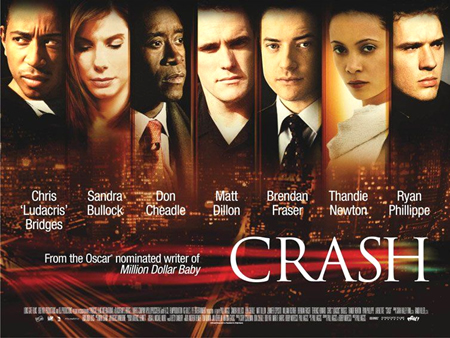Hyperlink films, which use cinematic devices such as flashbacks, scenes out of chronological order, split screens and voiceovers to create an interacting network of storylines and characters across space and time, mirror contemporary globalized communities, it is said.
However, films in this genre like "Memento", "Love Actually" and "Crash" are not as new and innovative as believed - they still conform to conventional cinematic and social patterns, say scholars after an examination of twelve hyperlink films, ten female interest conventional films and examples from the real world and classical fiction.
Hyperlink cinema gives the impression that people's lives can intersect on scales that would not have been possible without modern technologies of travel and communication.
Jaimie Krems, an anthropology graduate student at of Arizona State University, and Professor Robin Dunbar, anthropologist and evolutionary psychologist at the University of Oxford, said they wondered if the social group sizes and properties of social networks in such films differ vastly from the real world or classic fiction.

The worst movie to win an Academy Award? No one voting watched it, but they all knew it must be important. It didn't do much for you cognitively either. Image credit and link: Wordpress.
They set out to see if the films can side-step the natural cognitive constraints that limit the number and quality of social relationships people can generally manage. Previous papers claimed for instance that conversation groups of more than four people easily fizzle out. Others have said that a person can only maintain a social network of a maximum of 150 people, which is further layered into 4 to 5 people (support group), 12 to 15 people (sympathy group), and 30 to 50 people (affinity group).
They discovered that the examples in their sample rarely differed and all followed the same general social patterns found in the conventional face-to-face world. Hyperlink films had on average 31.4 characters that were important for the development of plot, resembling the size of an affinity group in contemporary society. Their cast lists also featured much the same number of speaking characters as a Shakespeare play (27.8 characters), which reflects a broader, less intimate sphere of action.
Female interest films had 20 relevant characters on average, which corresponds with the sympathy group size and mimics female social networks in real life. This limit on social constructs is biology, they declare.
"Because of our evolved psychology, humans cannot break through the cognitive glass ceiling that naturally limits our ability to handle social relationships, or to understand complex interpersonal dramas," says Krems in their statement, and who believes that a person's mental abilities determine how he or she is able to handle or be enthusiastic about genres, such as hyperlink films, that push the limits.
"Despite the promise it holds, digital and other new media may not help us engineer social networks or social cohesion on a larger scale, because our minds simply cannot understand or handle the mind states of more than a handful of people at once," Dunbar added.
Citation: Jaimie Arona Krems, R. I. M. Dunbar, 'Clique Size and Network Characteristics in Hyperlink Cinema', Human Nature DOI: 10.1007/s12110-013-9177-9






Comments